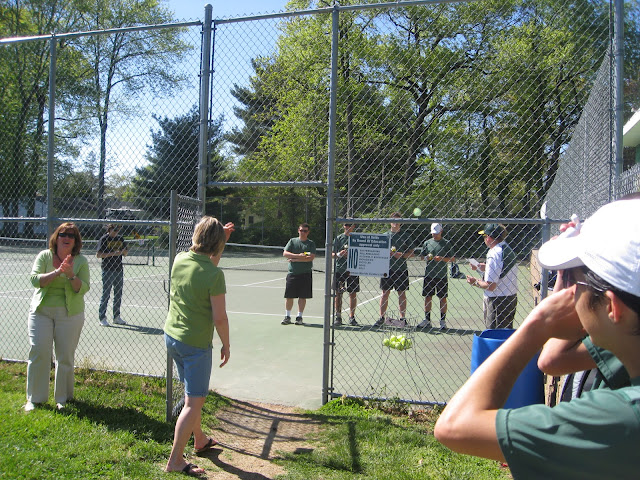\
Watch this clip on the forehand volley and see if you can observe all the finer points we've worked on in this slow motion volley video. This is very informative and cool!

;k

See how, Roger Federer's forehand volley, looks almost exactly like the teaching pros same volley in the first video above. Of course they just look the same, and for good reason of course. Now watch Roger Federer's forehand volley in slow-mo just below, each one of the videos is shot at a different angle. You learn a little something different about his mechanics by seeing the same simple stroke shot on film at some different angles. Check out his FH volley's start point, shoulders move together, the 'follow through,' where is the volley sweet-spot, see the angle he holds his racquet at as his swing shape starts and end, observe how he holds his elbow of his racquet hand, to lead the shot with the elbow held firm there, and in essence allowing the slight loosening of (the first three fingers and or down to heel pad of hand from those fingers) of the racquet hand, and in doing that while hitting with the proper grip and volley swing shape, the racquet face will slightly open as you hit thru your volley, laying back in your hand against your base knuckle.
You can also clearly see n any of the slow motion video clips below and above, specifically the follow through and after contact, when you see in these clips how the racquet face every so subtly opens up during the follow-through, right then remember the word backspin. This spin is vital in keeping your volleys low and or any reply you receive back low too, remember your at the net. The heel pad is where I have set most of you up, when I am instructing individually, with either of the two necessary grips. I want you all to feel that volley specific 'pop sound, and feeling, which upon hitting it correctly you can actually feel that pop sound up your forearm like hitting a baseball or tennis ball on the sweet spot of a bat or racquet. This feeling gives you valuable tip and or indication that the shot you might have just hit, was hit correctly, or close enough to correctly.
How this base knuckle of yours works here, is a very important point. Now and for most of your swing shape thru contact, your grip pressure is on the base knuckle, seen circled here in the picture below, you could slightly expand that circled area too. Your base knuckle is also important because it is from this place on your hand where you correctly switch/rotate back and forth between the Eastern Forehand grip(your neutral waiting grip for ground strokes) and the Continental grip to Serve, Volley, Overhead, etc with this is where you
Where does this same elbow take his racquet to prepare for his forehand volley stroke? Now see where his contact point is. I think Roger hits most of his forehand volleys at the same contact point, meeting the ball slightly in front and to the side of his left shoulder, much of the time. However in one of these 1 min clips, which I thought was fascinating, you'll clearly see how he uses the elbow of his hitting arm, when the ball happened to come very close to his body, moreover he never allowed the contact point to be anything but in-front of his body. Keep the ball in-front of your torso.

















No comments:
Post a Comment